TL;DR Summery: The 3-5-7 decorating rule uses odd-numbered groupings of objects (3, 5, or 7 items) to create more visually appealing and balanced arrangements than even numbers. This designer secret works because our brains find odd numbers more dynamic and engaging, making any space look professionally styled.
The 3-5-7 decorating rule is the game-changing principle that separates amateur decorating from professional-looking spaces. Have you ever wondered why some homes feel effortlessly stylish while yours looks cluttered or unfinished, despite your best efforts? The answer often lies in understanding how our eyes naturally process visual arrangements.
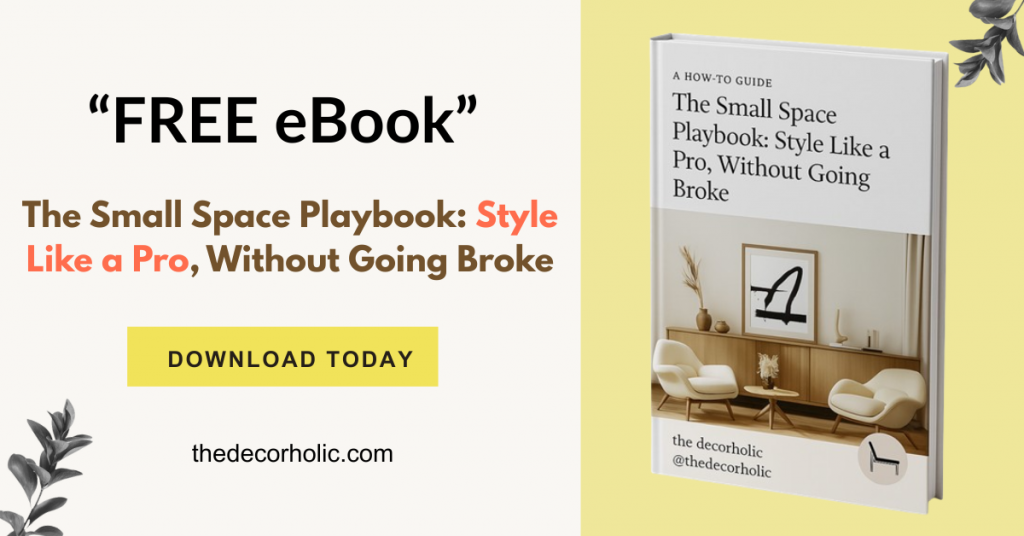
Every day, countless homeowners struggle with creating cohesive, magazine-worthy interiors. They buy beautiful pieces but can’t seem to arrange them in a way that feels intentional and polished. The frustration is real – you know your space has potential, but something always feels “off.”
This comprehensive guide reveals the designer secret that transforms ordinary rooms into extraordinary spaces: the 3-5-7 decorating rule. You’ll discover exactly how to apply this principle to every area of your home, from coffee table styling to gallery walls, plus advanced techniques that even seasoned decorators use.
By the end of this post, you’ll have the confidence to style like a pro and create spaces that feel both collected and curated – without hiring a designer.
What Is the 3-5-7 Decorating Rule?

The 3-5-7 decorating rule states that grouping objects in odd numbers (specifically 3, 5, or 7) creates more visually engaging and harmonious arrangements than even-numbered groupings. This principle leverages how our brains naturally process visual information, creating dynamic tension that keeps the eye interested.
“The 3-5-7 rule is based on the idea that odd numbers of objects (ideally 3, 5, or 7) are more visually engaging and appealing than even-numbered groupings,” explains interior designer Jamie Gernert.
The science behind this rule lies in asymmetry and visual hierarchy. When objects are arranged in odd numbers, our eyes don’t immediately find a center point, creating a more dynamic and interesting composition. This forces us to look longer and engage more deeply with the arrangement.
The Psychology Behind Odd Numbers
Research in visual perception shows that odd-numbered groupings create what designers call “pleasing asymmetry.” According to a survey among interior designers, 85% admit they use odd-number groupings as their go-to trick for creating pleasing arrangements.
Even numbers, particularly pairs, create symmetry that our brains process quickly and dismiss. While symmetry has its place in design, it can feel static and boring when overused. Odd numbers prevent this visual “completion,” keeping arrangements feeling alive and intentional.
Three Types of 3-5-7 Applications
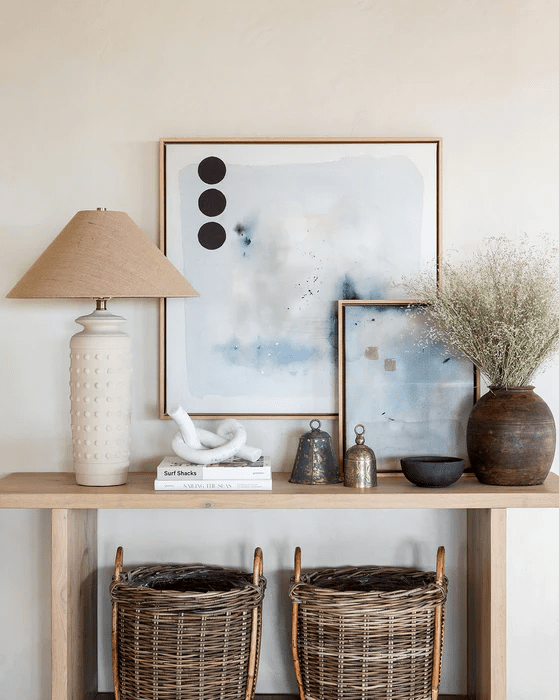
Object Groupings: The most common application involves physically grouping decorative objects, books, plants, or artwork in clusters of 3, 5, or 7.
Layered Elements: Advanced applications include layering different types of elements – textures, heights, or materials – in odd numbers throughout a single vignette.
Room-Wide Implementation: The most sophisticated use involves applying the rule across entire rooms, considering furniture groupings, color repetitions, and architectural elements.
Don’t Miss: How To Create a Pinterest Mood Board For Home Decor
Why the 3-5-7 Rule Works: The Science of Visual Appeal

Our brains are hardwired to find odd-numbered arrangements more compelling because they create natural focal points and visual movement. Understanding this neurological response helps explain why this rule consistently produces professional-looking results.
Visual Hierarchy and Eye Movement
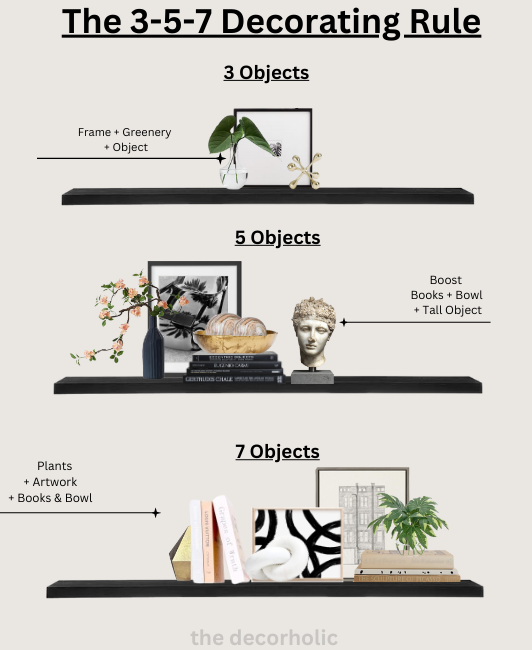
When you arrange three objects, your eye naturally creates a triangle, moving from the tallest to the shortest and back again. This creates what designers call “visual flow” – a pleasing path for the eye to follow.
With five objects, you get multiple triangular relationships that add complexity without overwhelming the composition.
Seven objects allow for even more sophisticated arrangements, perfect for larger surfaces like long console tables or mantels. However, beyond seven objects, arrangements can become chaotic without careful consideration of sub-groupings.
The Goldilocks Principle in Design
Three is often “just right” for most styling situations because it’s the smallest odd number that creates a true group. It’s large enough to feel intentional but small enough to avoid clutter. This is why you’ll see the “rule of three” referenced frequently in design literature.
Five extends this concept for medium-sized surfaces, while seven works best for large-scale arrangements where you need more visual weight to balance the space.
Cultural and Biological Preferences
Interestingly, the preference for odd numbers appears across cultures and may have evolutionary roots. In nature, odd-numbered patterns are common – think of flower petals or leaf arrangements. This biological familiarity may contribute to why odd numbers feel more “natural” and appealing to us.
Trending Post: Best Small Bar Area Ideas That Transform Any Space Into an Entertainment Hub
How to Apply the 3-5-7 Rule in Different Rooms
Living Room Applications
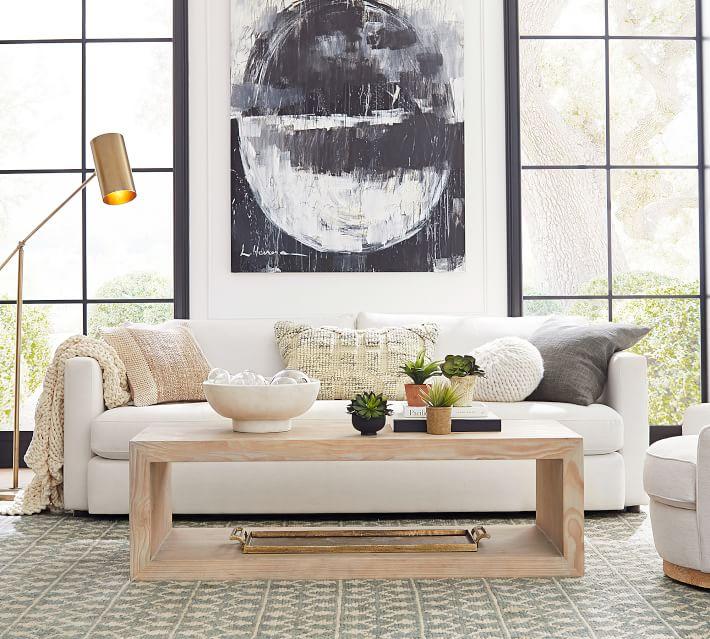
Coffee tables are the perfect starting point for practicing the 3-5-7 rule. Begin with three items of varying heights: perhaps a stack of books (low), a small plant or candle (medium), and a decorative object like a sculptural bowl (varying height based on your other pieces).
Coffee Table Styling Essentials:
- Start with a tray to anchor your grouping and define the space
- Include one living element (plant, fresh flowers, or greenery)
- Add one functional item (coasters, small bowl, or decorative box)
- Incorporate texture variety: smooth ceramic, rough wood, soft fabric
- Keep arrangements off-center for a more casual, lived-in feel
For larger coffee tables, expand to five items by adding a small tray with grouped objects and another plant or decorative element. The key is maintaining the odd-number principle while varying heights, textures, and visual weights.
Console Table Styling Essentials:

Console Table Styling: Long console tables behind sofas work beautifully with five or seven objects. Create sub-groupings within your arrangement – perhaps a group of three smaller items, then space, then a group of two different items. This maintains visual interest across the entire surface.
Console Table Success Formula:
- Use the “mountain range” approach – vary heights like a landscape
- Include one large anchor piece (lamp, artwork, or tall vase)
- Add medium-height items to bridge tall and short pieces
- Incorporate personal touches (family photos, travel souvenirs)
- Balance visual weight across the entire length
Bookshelf Styling Essentials:

Bookshelf Arrangements: Instead of filling every shelf uniformly, create vignettes using the 3-5-7 rule. Combine books with decorative objects in odd-numbered groupings on each shelf level.
Bookshelf Styling Tips:
- Group books by color or size for visual cohesion
- Add horizontal book stacks to create platforms for objects
- Include one plant per every 2-3 shelves for life and color
- Use bookends as decorative elements that serve a function
- Leave some shelves less full to create breathing room
Bedroom Implementations
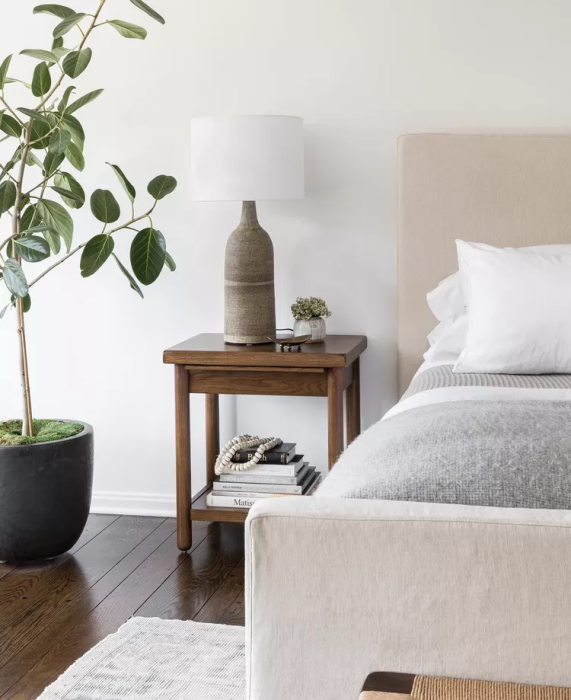
Nightstand Styling: Keep it simple with three items – a lamp (essential function), a small plant or candle, and one personal item like a book or small decorative object.
Nightstand Must-Haves:
- Table lamp at appropriate height for reading (24-27 inches from mattress)
- One personal item that brings you joy (photo, small sculpture, or meaningful object)
- Small plant that thrives in bedroom conditions (pothos, snake plant, or succulent)
- Keep charging cables hidden but accessible
- Use a small tray to corral smaller items like jewelry or reading glasses
Dresser Styling Essentials:

Dresser Top Arrangements: Larger dresser surfaces can accommodate five items beautifully. Consider a mirror or art (if wall-mounted, this counts as part of your grouping), then arrange four additional items with varying heights and purposes.
Dresser Styling Strategy:
- Center a mirror or artwork as your focal point
- Add matching table lamps for symmetry if dresser is wide
- Include a jewelry dish or decorative bowl for function
- Incorporate fresh flowers or a plant for softness
- Use varying heights: tall (perfume bottles), medium (candles), low (small dishes)
Kitchen and Dining Applications

Kitchen Counter Vignettes: Even functional kitchens benefit from thoughtful styling. Group three items near your coffee station – perhaps a canister, a small plant, and a decorative cutting board.
Kitchen Counter Essentials:
- Choose items that can handle kitchen conditions (heat, moisture, splashes)
- Include herbs in attractive planters for beauty and function
- Use attractive storage containers that earn their counter space
- Add one decorative element that reflects your personality
- Keep groupings away from main prep areas for functionality
Dining Table Styling Essentials:

Dining Table Centerpieces: Create seasonal centerpieces using odd numbers of candles, small planters, or decorative objects. Three identical candles of different heights work beautifully, or five small bud vases with single stems.
Centerpiece Guidelines:
- Keep arrangements low (under 12 inches) for conversation flow
- Use odd numbers of candles, flowers, or decorative elements
- Incorporate natural materials (wood, stone, or plants) for warmth
- Consider the table’s proportions – longer tables can handle five to seven items
- Make arrangements easy to move for dining functionality
Also: How To Decorate An Inviting Dining Room
Advanced 3-5-7 Techniques: Beyond Basic Groupings

Layering and Sub-Groupings
Professional designers often create complex arrangements by using sub-groupings within larger odd-numbered collections.
For example, when styling a mantel with seven objects, you might create a group of three on one side, a single statement piece in the center, and a group of three different objects on the other side.
This technique works because it maintains the overall odd number while creating visual balance through strategic placement.
Height Variation Strategies
The most successful 3-5-7 arrangements incorporate significant height variation. Follow the “high-medium-low” principle within each grouping:
- High: Tall objects like vases, candlesticks, or sculptural pieces
- Medium: Books, small plants, or medium-sized decorative objects
- Low: Flat objects like coasters, small dishes, or ground-hugging plants
Color and Texture Considerations
While the rule focuses on quantity, color repetition in odd numbers strengthens the overall composition. If you’re using three objects, consider repeating one color across all three pieces, or use three different shades of the same color family.
Texture variation also enhances odd-numbered groupings. Combine smooth ceramics with rough woven baskets, or matte finishes with glossy surfaces to create tactile interest.
The Triangle Principle

Always consider the triangular relationships your arrangements create. Even when objects aren’t physically arranged in a triangle, their visual weights should create triangular balance. Place your heaviest visual element (largest, darkest, or most colorful) at one point of an imaginary triangle, with lighter elements balancing the other points.
Don’t Miss: 18 Fresh Decorating Ideas To Update Your Fireplace
Common Mistakes and How to Avoid Them
Mistake #1: Ignoring Scale and Proportion
The most common error is using objects that are too similar in size or too dramatically different. While you want height variation, extreme differences can create imbalance. Aim for a 2:3:4 ratio in heights when possible.
Quick Scale Solutions:
- Use the “hand test” – objects should vary by at least one hand-width in height
- Choose one tall statement piece (12+ inches), one medium piece (6-8 inches), and one low piece (2-4 inches)
- Avoid placing objects of identical height next to each other
- Mix visual weights: pair a heavy ceramic piece with lighter materials like glass or wood
Mistake #2: Overthinking the Rule
The 3-5-7 rule is a guideline, not a law. Some situations naturally call for even numbers – like matching table lamps or symmetrical arrangements. Use the rule as your default, but trust your eye when symmetry serves the space better.
When to Break the Rule:
- Formal dining rooms where symmetry creates elegance
- Matching nightstand styling for bedroom balance
- Architectural elements like windows or built-ins that demand symmetry
- Gallery walls where even numbers create better composition
- Small spaces where odd numbers feel overwhelming
Mistake #3: Forgetting Negative Space
Cramming objects together defeats the purpose of thoughtful arrangement. Leave breathing room between groupings and allow negative space to be part of your composition. This prevents arrangements from looking cluttered and helps each piece shine.
Spacing Guidelines:
- Leave 2-3 inches between objects in a grouping
- Use the “triangle breathing room” – imagine triangles between your objects
- Allow 6-8 inches between separate groupings on long surfaces
- Keep 25% of surface area empty for visual rest
- Group objects closer together than they are to other groupings
Mistake #4: Using Only Decorative Objects
Incorporate functional items into your odd-numbered arrangements to make them feel lived-in and practical. A beautiful soap dispenser, a useful bowl, or an attractive lamp can all be part of your groupings while serving a purpose.
Functional + Beautiful Combinations:
- Pretty hand soap, small plant, and decorative tray in powder rooms
- Coffee table books, coasters in attractive holder, and fresh flowers
- Cutting boards, olive oil in beautiful bottle, and potted herbs in kitchens
- Jewelry dishes, perfume bottles, and small succulents on bedroom dressers
Mistake #5: Static Arrangements
The best styled spaces evolve with the seasons and your life. Don’t create arrangements and never touch them. Swap out objects, add seasonal elements, or refresh groupings periodically to keep your space feeling dynamic.
Easy Refresh Strategies:
- Swap one object monthly to keep arrangements fresh
- Add seasonal elements: pinecones in fall, flowers in spring
- Rotate books to show different covers and titles
- Change candle colors to match seasons or moods
- Move arrangements to different surfaces occasionally
Trending Post: Best Accent Wall Colors For Every Room in Your Home
Room-by-Room Application Guide
Entryway Excellence

First impressions matter, and your entryway sets the tone for your entire home. Use the 3-5-7 rule to create a welcoming vignette on your console table or bench.
Start with three essentials: a lamp for ambiance, a small tray for keys and mail, and one welcoming element like fresh flowers or a seasonal decoration. This combination is both functional and beautiful.
For larger spaces, expand to five items by adding a mirror (creates the illusion of more space) and a personal touch like a framed photo or small plant.
Bathroom Styling

Bathrooms often get neglected in decorating, but they benefit enormously from the 3-5-7 rule. Counter space is usually limited, so stick with three items: perhaps a soap dispenser, a small plant that thrives in humidity, and a decorative container for cotton swabs or other necessities.
Window sills can accommodate three small plants or decorative objects, instantly elevating the space’s ambiance.
Home Office Organization

Productive workspaces need visual calm, making the 3-5-7 rule particularly valuable. On your desk, limit decorative elements to three items that inspire you: perhaps a small plant, a beautiful pen holder, and one personal item like a photo or meaningful object.
Bookshelves in offices work well with five-item arrangements per shelf: books grouped with a few decorative objects and perhaps a small plant for life and color.
Don’t Miss: Aesthetic Work Desk Setup Ideas
Seasonal Applications and Holiday Styling
Spring and Summer Arrangements

Warmer months call for lighter, fresher interpretations of the 3-5-7 rule. Focus on organic materials, fresh flowers, and airy compositions. Three glass vases with different fresh flower types, five small potted herbs on a kitchen windowsill, or seven different succulents arranged on a patio table all embody the rule while celebrating the season.
Fall and Winter Styling

Cooler months allow for richer, more layered applications. Think three different-sized pumpkins for fall, five pinecones of varying sizes for winter, or seven candles of different heights for cozy evening ambiance.
The key is maintaining the odd-number structure while adapting materials and colors to match seasonal moods.
Holiday Integration

Holiday decorating becomes more sophisticated when you apply the 3-5-7 rule. Instead of scattering decorations randomly, create intentional groupings. Three different Christmas trees (perhaps a large floor tree, medium tabletop tree, and small decorative tree), five stockings hung with varying lengths, or seven ornaments clustered on a mantel all feel more intentional than random placement.
Don’t Miss: The Hottest Fall Decor Trends to Try Now
Budget-Friendly 3-5-7 Styling

Thrift Store and DIY Solutions
Creating beautiful odd-numbered arrangements doesn’t require expensive pieces. Thrift stores are treasure troves for varied heights and interesting textures. Look for different-sized vases, vintage books for stacking, and unique containers that can hold plants or other objects.
Natural Elements
Nature provides endless free styling materials that work beautifully in odd numbers. Collect interesting stones, branches, or pinecones. Three different driftwood pieces, five smooth river rocks, or seven different feathers can create stunning arrangements that cost nothing but time to collect.
Repurposing Household Items
Look around your home with fresh eyes for potential styling pieces. Different-sized mason jars, interesting bottles, vintage books, or even beautiful kitchen tools can become part of your decorative arrangements when grouped thoughtfully in odd numbers.
Most Popular Post:
Interior Design Style Quiz
Timeless Paint Colors That Never Go Out of Style
Create Your Perfect Ergonomic Home Office: A Complete Guide
Must-Have Accessories for Guys: The Secret to a Stylish Space
Modular Sofas for Small Spaces: Brilliant Solutions for Compact Living
Conclusion: Key Takeaways for 3-5-7 Success
The 3-5-7 decorating rule transforms ordinary spaces into professionally styled rooms by leveraging our brain’s natural preference for odd-numbered arrangements. This simple but powerful principle creates visual interest, balance, and sophistication without requiring expensive purchases or design training.
Remember these essential points as you implement the rule:
- Start small and build confidence.
- Begin with coffee table styling or a single bookshelf before tackling entire rooms.
- Vary heights, textures, and visual weights within your groupings to create dynamic arrangements that hold interest over time.
- Include functional items alongside decorative pieces to ensure your arrangements serve your lifestyle, not just your aesthetic goals.
Trust your eye while following the framework. The 3-5-7 rule provides structure, but your personal taste and practical needs should guide final decisions. Some situations naturally call for symmetry or even numbers – use the rule as your default while remaining flexible.
Most importantly, have fun with the process. Styling your home should bring you joy and reflect your personality. The 3-5-7 rule simply provides a professional framework for expressing your unique style with confidence.
Ready to transform your space? Start with one small arrangement today.
- Choose three objects you love.
- Vary their heights.
- Place them together on a surface that needs styling.
- Observe how this simple change elevates your room’s sophistication.
- Expand the principle throughout your home.
Share your 3-5-7 styling successes in the comments below – we’d love to see how you’re applying this designer secret to create beautiful, intentional spaces that reflect your personal style.
The 3-5-7 Decorating Rule-Frequently Asked Questions (FAQ)
Q: Does the 3-5-7 rule apply to furniture arrangements too?
A: Yes, though it’s more flexible with furniture. Three chairs around a side table, five pieces of furniture in a seating arrangement, or seven elements in a room’s layout can all work beautifully when balanced properly.
Q: What if my space is too small for larger groupings?
A: Stick with three-item arrangements in smaller spaces. The rule scales down perfectly – even tiny surfaces benefit from thoughtful odd-numbered groupings that create visual interest without overwhelming the space.
Q: Can I mix different styles within a 3-5-7 arrangement?
A: Absolutely. Mixing styles adds personality and prevents arrangements from feeling too matchy or sterile. The odd number structure holds eclectic pieces together visually, creating cohesion despite stylistic differences.
Q: How often should I rearrange my 3-5-7 groupings?
A: Refresh arrangements seasonally or when they start feeling stale to you. The beauty of this system is that it’s easy to swap out individual pieces while maintaining the overall structure and visual appeal.
Q: What’s the biggest mistake people make with this rule?
A: Using objects that are too similar in size or cramming them too close together. Successful arrangements need height variation and breathing room to create the visual impact that makes this rule so effective.
Subscribe To the Newsletter!
Subscribe now for an endless feed of inspirational women’s cave decor ideas, pampering rituals, and more tips for curating your ultimate escape. Let’s start making your cozy refuge a reality – you so deserve this!
CATCH THE LATEST IN HOME DECOR TRENDS: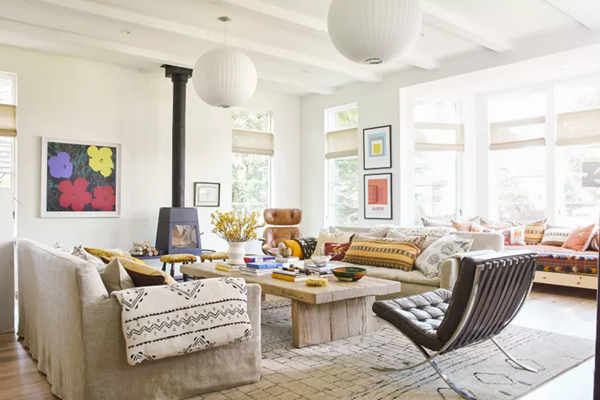
Steal These 16 Expert-Approved Decorating Secrets

How To Accessorize Your Living Room
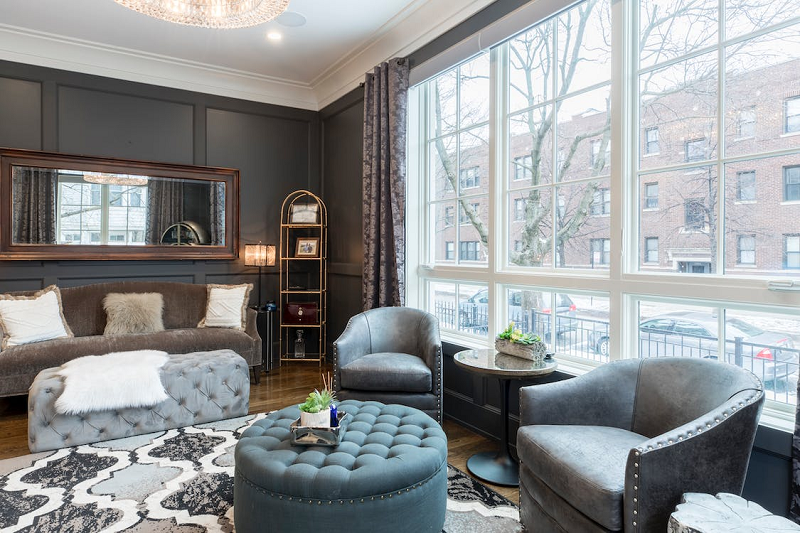
Small Space? 10 Ways To Make A Room Appear Bigger
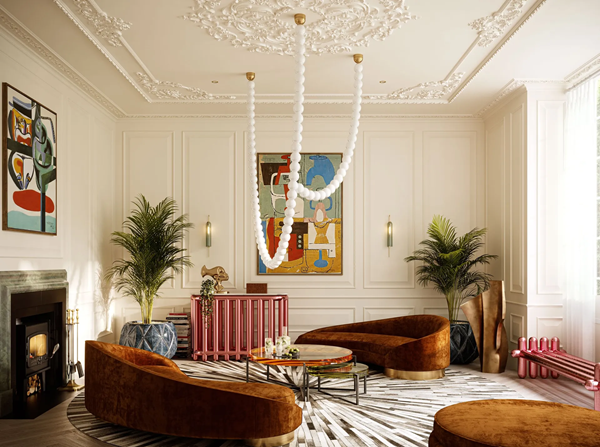
Make Your space Look Expensive
GET CAUGHT UP ON ALL THE INSPIRING DECOR TIPS:
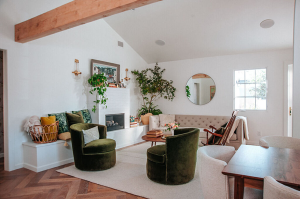
18 Fresh Decorating Ideas To Update Your Fireplace

How To Create An Art Gallery Wall


